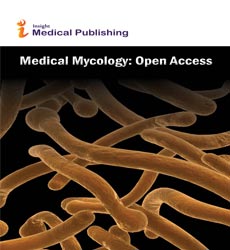Abstract
Morphological, physiological and molecular characterization of two fungi isolated from the Yellowstone National Park
Two fungi were isolated from the Yellowstone national park using Millipore filtration systems equipped with 0.22 µm membrane filters. The filters were transported back to the lab, cut into small pieces, placed on Nutrient Agar plates and incubated at 37°C for 72 hours. Single colonies of YNP6-TSU and YNP7-TSU were selected and inoculated on new PDA media to have a pure culture for characterization. Three approaches were conducted to assist the identification process. The morphological assessment was done by using the agar block technique to examine the structure of the fungi and the spores without disrupting them. It was found that YNP6-TSU has septate hyphae and the spores are inside an ascus, and YNP7-TSU has coenocytic hyphae with spores inside sporangia. To assess the effect of the temperature, two approaches were conducted. To determine the optimal temperature, three agar media PDA, SAM and V8 were used to grow the fungi in 25, 30, 37, 45 and 50ºC for 10 days. To test the growth in higher temperature, PDA broth media was used to grow fungi at 55, 60, 65 and 70ºC in water bath for 10 days as well. It was concluded that at 37ºC and with PDA as a media, the growth of both fungi was at a higher rate, while there was no growth at 50ºC and higher. In the molecular process, fungi were grown on PDA for seven days and mycelia were harvested for DNA extraction, PCR and sequencing. The results of sequencing and blasting showed 100% match for YNP6-TSU to Verruconis calidifluminalis and for YNP7-TSU to Rhizopus microspores. Future studies will include the determination of the optimal PH for growth of the fungi in three broth media and the extraction and purification of the brown pigment from Verruconis calidifluminalis (YNP6-TSU).
Author(s):
Alaa Alyamani
Abstract | PDF
Share this

Google scholar citation report
Citations : 164
Medical Mycology: Open Access received 164 citations as per google scholar report
Abstracted/Indexed in
- Google Scholar
- China National Knowledge Infrastructure (CNKI)
- Directory of Research Journal Indexing (DRJI)
- WorldCat
- Publons
- Geneva Foundation for Medical Education and Research
- Secret Search Engine Labs
Open Access Journals
- Aquaculture & Veterinary Science
- Chemistry & Chemical Sciences
- Clinical Sciences
- Engineering
- General Science
- Genetics & Molecular Biology
- Health Care & Nursing
- Immunology & Microbiology
- Materials Science
- Mathematics & Physics
- Medical Sciences
- Neurology & Psychiatry
- Oncology & Cancer Science
- Pharmaceutical Sciences
